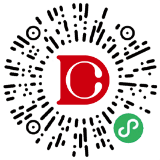对德国太阳能市场的需求大幅增长的希望破灭了,中国的多家太阳能厂商第三季度盈利状况让人大失所望。接下来的一两个季度,市场更加难以预测,同时必然会有越来越多的企业被兼并或者破产。
尚德、韩华、阿特斯、晶澳和赛维第三季度均亏损,财务报表中的库存也消失了,因为市场价格的大幅下跌,库存的价值消失了。天合光能也面临同样的困境。从财务报表中大家都能看到光伏市场正面临的三大困境:供给过剩、价格暴跌和项目融资困难。很多企业关闭了工厂,减少产能,有的甚至申请破产。前段时间,Solydra, SpectraWatt和Evergreen相继申请破产。Energy Conversin Devices暂停生产,并计划年底裁员500人。其他公司,如Q-Cells、SolarWorld、Renewable Energy等要么消减产量,要么关闭工厂。这些巨头们都是如此萧条的业绩,光伏的现状确实让人心寒。中国的很多企业也在挣扎在存亡的边缘。英利却在不久前开了动员大会,声称不裁员、不减薪,有望提前走出寒冬。
施正荣表示,为了重新调整市场供求,光伏行业需要经历一个动荡、整合和巩固的过程。这个行业根本容纳不了300多家电池和组件制造商。行业洗牌就是淘汰弱小企业出局的过程,从而让整个行业更健康的发展。事实上,根据尚德的估计,前六名的电池组件供应商的市场份额由2010年第二季度的26%增加到2011年第二季度的55%。作为中国乃至世界上最大的太阳能电池和组件制造商,尚德预计2012年中期将会再次实现盈利。尚德发布的第三季度的收入为8.09亿美元,和第二季度相比下降了2.5%,但和去年相比提高了8.9%。第三季度出货量比第二季度增加了16%,比2010年第三季度增加了32%。净亏损达1.16亿美元,每股损失达0.64美元。而今年的第二季度净亏损为2.59亿美元,去年第三季度净收入为家3310万美元。尚德和其他厂商一样,一直都强调努力消减成本,提高产品性能,调整产能,争取客户渡过难关。尚德、韩华和晶科都曾预期第三季度在德国的销售额将会增加,但是由于需求下降让他们的希望化为泡影。
赛维本来是多晶硅和晶片的生产商,最近几年才开始生产电池和组件。最近也受到了市场的沉重打击,业绩一直不佳。该公司第三季度销售额为4.71亿美元,和第一季度相比下降了6%,和去年同期相比下降了32%。第三季度亏损扩大到1.14亿美元,而第二季度的净亏损为8770万美元,2010年的第三季度亏损为9340万美元。另外,晶澳太阳能第三季度营收为3.880亿美元,净亏损为5895万美元,而去年同期净利润为人民币5.14亿元;阿特斯太阳能第三季度净营收4.996亿美元,净亏损为4390万美元,去年同期净利润为2030万美元。英利第三季净营收6.677亿美元,净亏损达2830万美元在已经公布三季报的10家中概光伏股中,仅有大全新能源和晶科能源两家公司利润为正值,其中,大全新能源第三季度实现利润额为1990万美元,晶科能源实现净利润1070万美元,但上述数字相比去年同期都有了大幅下挫。
光伏市场的崩溃源于欧洲市场的不景气。今年年初,意大利和法国新上网电价政策的迟迟不肯出台,这耽搁了光伏安装的进展,也影响的买方的购买决定。德国按计划降低了上网电价补贴,由于补贴消减幅度大,有人甚至预测今年的安装量可能比2010年还少。正是由于意大利、法国的政策不确定性和德国的市场需求下降,光伏组件的库存节节攀高,价格下跌比预期的还快。几个月前,太阳能组件的价格今年已经下跌了30-40%。尚德表示,其产品的平均售价从第二季度到第三季度下降了16%,预计第三季度到第四季度的下降幅度为10%以下。
但是,欧洲仍将是最大的市场。因此,各个国家的上网电价政策和政治经济状况也将继续影响太阳能光伏市场未来的发展。德国已经计划2012年消减15%的补贴。一些欧洲国家也一直鼓励屋顶小型光伏系统的安装。太阳能光伏厂家已经把目光瞄准了下一个快速增长的市场,如美国,中国和印度。印度已经推出了国家太阳能计划,并且获得了美国进出口银行的贷款支持,安装的组件也来自美国的公司,如First Solar, Abound Solar. 2011年,预计中国和美国的光伏安装量都约为2吉瓦。2012年,中国市场的安装量肯定不会低于2011年。中美市场的繁荣将对全球光伏市场的复苏起到巨大作用。我们不希望所谓的“倾销”影响的绿色能源的未来。
Tough Time for PV Industry in 2012
Hopes that demand for solar energy equipment in Germany would rise significantly were dashed and led to disappointing third-quarter earnings, reported several Chinese manufactures on Tuesday. The market will continue to see a bumper crop of solar panels in the next quarter or two, along with more mergers or potential bankruptcies.
Suntech Power, Hanwha Solar, Canadian Solar and LDK Solar all posted losses for the third quarter and many included inventory write-offs in their financial statements because their goods have lost values as a result of the rapidly declining prices in the market. The story is the same for Trina Solar, who reported third-quarter losses a day earlier. The financial pictures given by the companies now follow a now well-known tale of a market bedeviled by oversupply, collapsing prices and tightened project finances throughout this year.
Many companies have closed factories, reduced production or filed bankruptcies. Solyndra, SpectraWatt and Evergreen Solar filed for bankruptcies within weeks of each other this year. Energy Conversion Devices suspended manufacturing and planned to lay off 500 workers by the end of this year. Companies such as Renewable Energy Corp., SolarWorld, and Q-Cells have cut back production or shuttered factories. China companies are also struggling for survival. But, Yingli Solar announced recently that it would lay off no workers and cut no salary, which was expected to walk out of the PV trough soon.
“To recalibrate supply and demand, we believe the industry needs to go through a process of calculation, liquidation and then consolidation. The industry simply can’t support 300-plus cell and module manufacturers,” said Suntech CEO Zhengrong Shi.In fact, by Suntech’s own estimate, the market share of top six solar cell/module suppliers increased from 26 percent in the second quarter of 2010 to 55 percent in the second quarter of 2011, Shi said. Suntech, the largest solar cell and panel maker in China, expects to start making a profit again by the middle of 2012, he added.
Suntech posted $809.9 million in third-quarter revenue, down 2.5 percent from the second quarter but a boost of 8.9 percent year over year. Product shipment grew 16 percent from the second quarter and 36 percent from the third quarter of 2010. Net losses reached $116.4 million, or $0.64 per share, during the third quarter, compared with a net loss of $259.5 million in the second quarter and a net income of $33.1 million in the third quarter last year. Suntech and other manufacturers have emphasized their efforts to cut costs, improve their products’ performance, adjust their supply with demand and convince customers to stick with them. Suntech, Hanwha and JinkoSolar both had expected sales to pick up in Germany during the third quarter, but the demand fell short of their expectations.
LDK, a polysilicon and wafer producer, who added cell and panel manufacturing to its repertoire in recent years, has been pummeled by the market forces and was recently dropped. It posted $471.9 million in sales for third quarter, down six percent from the first quarter and 32 percent from the year-ago period. Losses widened to $114.5 million, of $0.87 per share, for the third quarter, compared with a net loss of $87.7 million in the second quarter and $93.4 million ($0.71 per share) in the third quarter of 2010.
Europe has been the epicenter of the market collapse. Delays by Italian and French governments to set new levels of feed-in tariffs earlier this year prompted a pause in installations and delayed buying decisions. Germany lowered feed-in tariffs as planned, but the cuts were significant and drew predictions that the market would install fewer megawatts than it did during 2010.The uncertainties surrounding policies in Italy and France — and the lowered demand expected in Germany — caused a pile up of solar panels, and prices began to drop faster than expected.A few months back, analysts said solar panel prices had already dropped 30-40 percent this year. Suntech said the average selling price of its products fell 16 percent from the second to the third quarter, and it expects a decline in the "low teens" from the third to the fourth quarter.
But Europe will remain the largest market, so the fate of feed-in tariffs in various countries and their political and financial health will continue to shape the growth of the solar industry. Germany already plans to reduce its feed-in tariffs by 15 percent in the coming year. European countries also have been structuring their incentives to favor smaller, rooftop installations. But solar companies also have begun to peg countries such as the United States, China and India as the next fast-growing markets. India’s own national solar policy, coupled with financial support from the Export-Import Bank of the United States has issued loans to Indian companies to install solar panels made by American companies such as First Solar and Abound Solar. It’s estimated that both China and United States will install about 2GW PV systems and will not less than this number in 2012. So, we hope so-called “dumping” will never brings clouds to green energy development in the near future.
索比光伏网 https://news.solarbe.com/201112/01/22277.html



